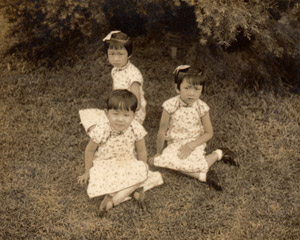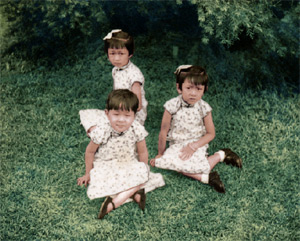|
|
|
It is not especially difficult to add color to a black and white image using Photoshop's layers feature, however, some photos are much more readily converted than others. Pictures which require minimal effort to convert will be ones in which there are large areas of nearly uniform color. The example provided here fits this description perfectly. It can be divided into four zones for colorization purposes: |
|
|
Note: Some may question the necessity for coloring a region black when the original is black and white. This is sometimes required when the original image is somewhat faded and these areas need to be restored to more realistic shade. This could normally be done with a simple levels correction, but the features of this photo such as hair and parts of the shoe are so badly faded and discolored that the standard practice of setting black points alone for the image as a whole, would not be effective here. For more information on using levels corrections, see the appropriate tutorial. |
|
|
|
|
|
|
|
|
|
|
|
Note: It is extremely important to have a properly calibrated monitor for this type of color work. |
|
|
|
|
|
|
|
|
 |
 |